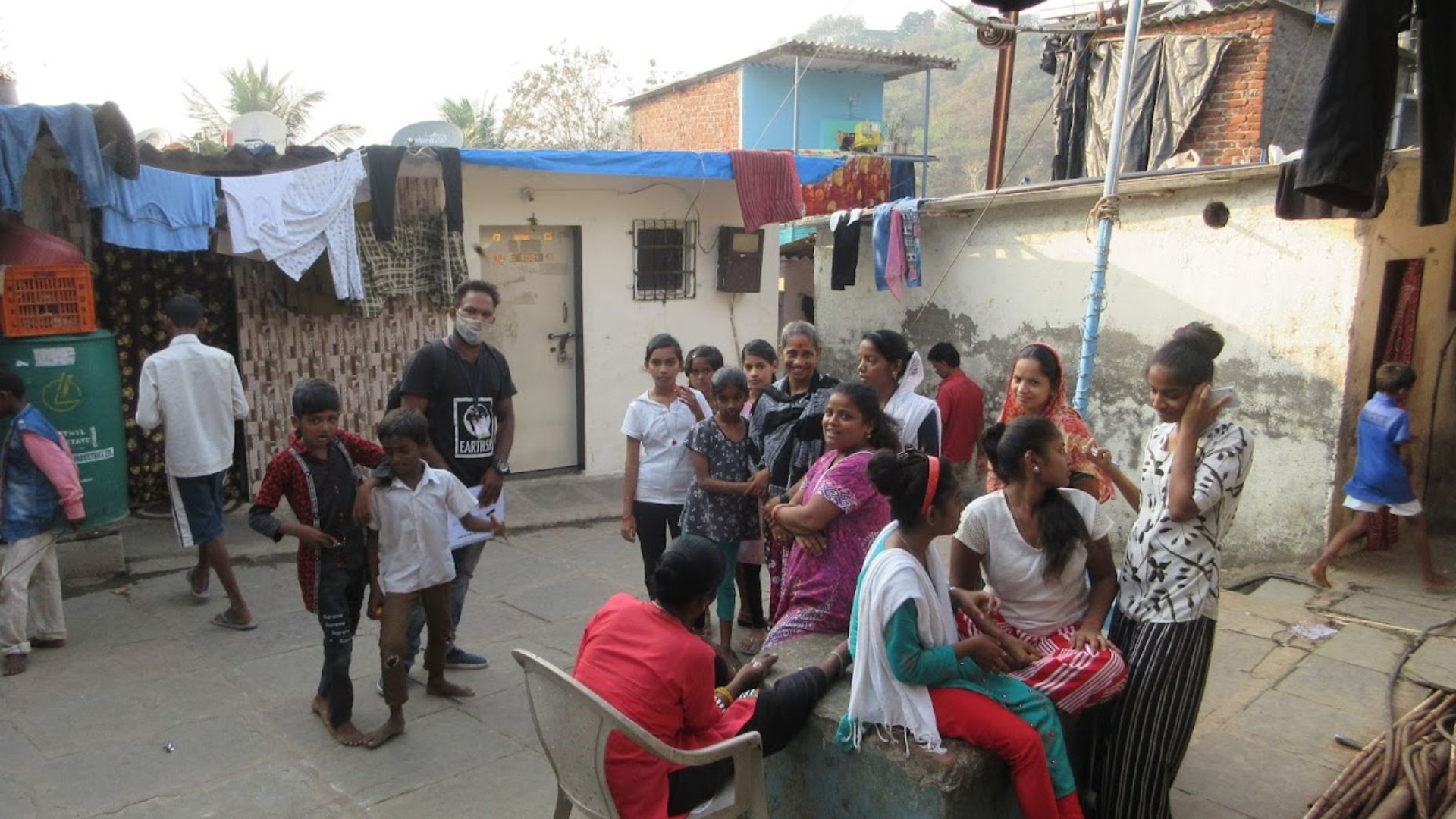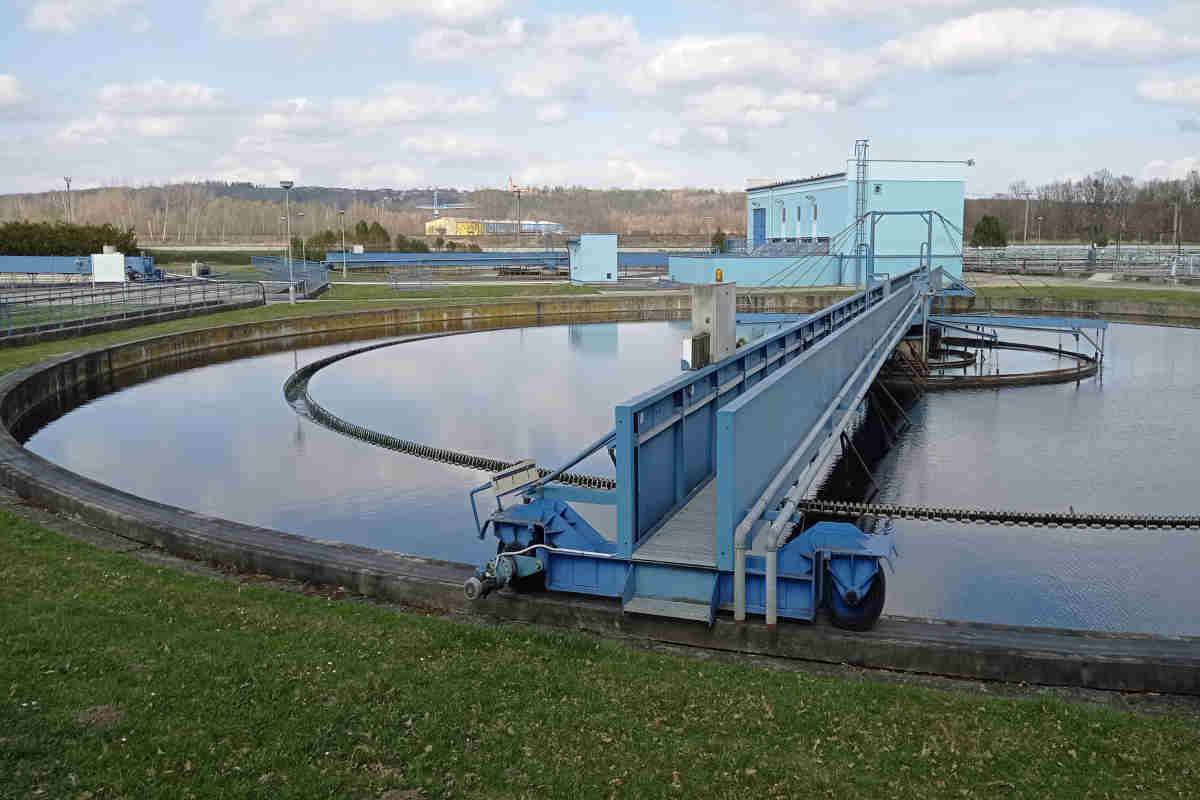Urban slums represent one of the most pressing challenges in contemporary urban development, particularly in rapidly growing cities across the Global South. Characterized by high population density, inadequate infrastructure, and informal land tenure, slums face chronic issues related to sanitation and waste disposal.
The lack of formal waste management systems in these areas often results in uncollected garbage, open dumping, and frequent burning of solid waste—practices that contribute to serious public health risks and environmental degradation. In India alone, over 65 million people live in slums, contributing significantly to the country’s urban waste burden.
Urban solid waste is projected to reach 165 million tonnes annually by 2030, with slums playing a major role due to their sheer population density and limited access to formal recycling systems. Conventional municipal solid waste (MSW) systems typically rely on centralized infrastructure, formal housing layouts, and serviceable roads—features often absent in slum environments.
These systems fail to address the unique socio-spatial complexities of informal settlements, resulting in systemic neglect. Earth5R, a social enterprise, intervenes through a community-driven model tailored to these challenges. By mobilizing residents, integrating informal waste workers, and leveraging localized solutions, Earth5R creates sustainable, scalable waste management systems within slums. This article explores the scientific rationale, field results, and replicable framework of Earth5R’s model as a solution to the slum waste crisis.
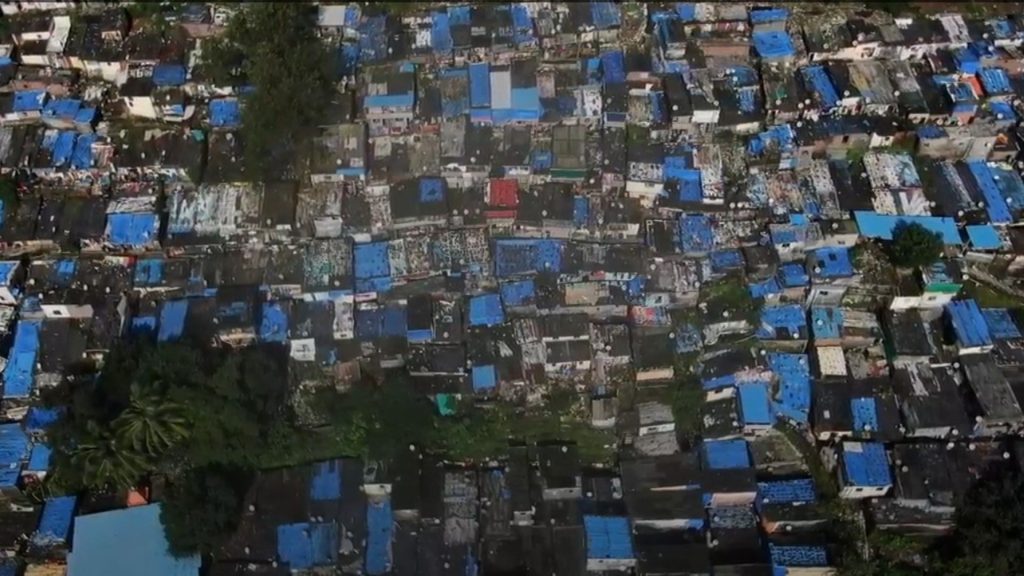
Understanding the Waste Management Challenge in Slums
Slum settlements are typically defined by high population density, informality of housing, and severe lack of basic services such as sanitation, water supply, and waste management infrastructure. These areas often develop on marginal lands, including floodplains, railway tracks, or industrial zones, where municipal service provision is either absent or severely limited.
As a result, waste accumulation becomes a visible and persistent problem, often manifesting in open dumping, clogged drains, and widespread littering. The types of waste generated in slums are diverse and often mixed. A significant proportion of the waste is biodegradable, including food scraps and organic matter.
However, there is also a growing share of plastic packaging, multilayered films, textiles, and household hazardous waste such as batteries and medical residues. Due to the lack of source segregation and collection systems, this heterogeneous mix complicates treatment and disposal efforts, leading to environmental and public health risks.
Studies show that slum communities face disproportionately higher rates of communicable diseases. The improper disposal of waste contributes to the proliferation of disease vectors such as mosquitoes and rodents, which can lead to malaria, dengue, and gastrointestinal infections.
Contaminated water sources and the burning of plastic waste also lead to respiratory illnesses and long-term exposure to toxins. According to the National Sample Survey (NSS) and WHO reports, slum populations in India have nearly double the risk of waterborne diseases compared to non-slum urban areas.
Despite numerous policy efforts, including those under the Swachh Bharat Mission, traditional municipal solid waste (MSW) models have largely failed in slum contexts. Their reliance on centralized infrastructure and formal addresses excludes the informal nature of slum layouts.
Literature reviews from urban planning journals and field evaluations by NGOs consistently reveal that top-down models without community engagement tend to be unsustainable. Comprehensive solutions require localized, community-centric models that address the unique socioeconomic and spatial realities of slums—something Earth5R’s approach aims to deliver.
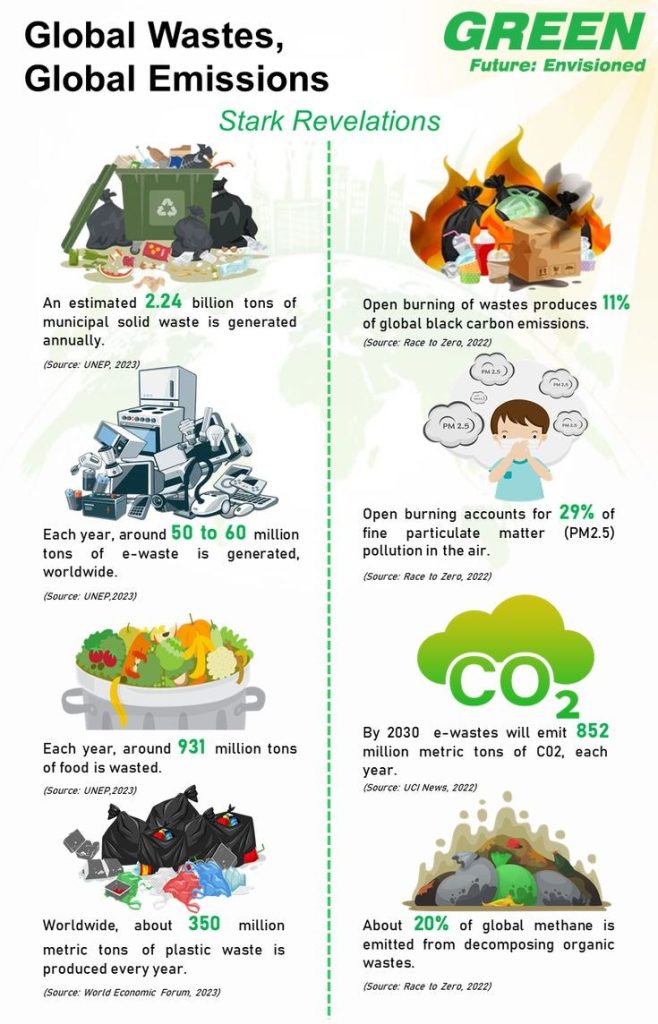
This infographic highlights the alarming global waste crisis, showing that over 2.24 billion tons of municipal solid waste and 931 million tons of food waste are generated annually. It also underscores the climate impact, with open burning contributing to black carbon emissions and e-waste projected to emit 852 million metric tons of CO₂ by 2030.
Earth5R’s Model: Principles and Framework
Earth5R’s waste management model is grounded in the philosophy of sustainability, community engagement, and the circular economy. At its core, the approach recognizes that slum communities are not just passive recipients of aid but active agents of change. Earth5R works to empower residents with the knowledge, tools, and agency needed to take control of their environment.
Rather than imposing top-down solutions, Earth5R collaborates with local stakeholders to co-create context-specific waste management systems that are practical, inclusive, and sustainable. Central to this philosophy is the 5R framework—Refuse, Reduce, Reuse, Repurpose, and Recycle—which offers a structured, actionable path toward minimizing waste and maximizing resource value.
“Refuse” focuses on limiting the intake of non-essential and harmful products, especially single-use plastics. “Reduce” encourages conscious consumption to lower the volume of waste generated. “Reuse” promotes the repeated use of materials, while “Repurpose” involves creatively transforming waste into useful products. Finally, “Recycle” ensures proper segregation and recovery of materials to prevent them from entering landfills or ecosystems.
Earth5R employs a decentralized implementation model, prioritizing local leadership and community ownership. Instead of relying solely on municipal collection systems, Earth5R trains local volunteers and waste workers, creating micro-ecosystems of waste management within each slum. This not only boosts efficiency but also generates livelihood opportunities for the urban poor.
The model is modular and scalable, designed to adapt to the unique layout and needs of each settlement. The initiative aligns strongly with national and global sustainability goals, particularly the Swachh Bharat Abhiyan and the United Nations Sustainable Development Goals (SDGs). Specifically, it contributes to SDG 11 (Sustainable Cities and Communities), SDG 12 (Responsible Consumption and Production), and SDG 13 (Climate Action).
The model achieves this by promoting low-emission practices, reducing urban pollution, and fostering resilient community systems. From a scientific perspective, Earth5R’s model draws on behavior change theory, emphasizing education, habit formation, and peer influence as tools for shifting household waste practices. It also incorporates systems thinking, treating slums not as isolated entities but as dynamic parts of a larger urban and ecological system.
By intervening at multiple levels—individual, community, and structural—Earth5R’s approach effectively addresses the root causes of poor waste management and builds sustainable, long-term solutions.
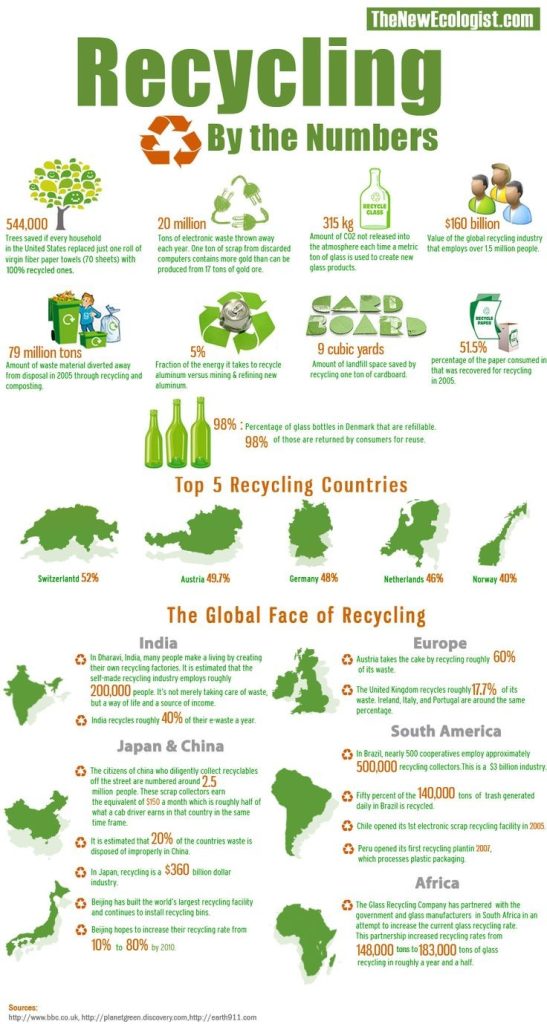
This infographic showcases the global scale and impact of recycling, highlighting that the industry is valued at $160 billion and employs over 1.5 million people. It also features top recycling nations and local success stories like Dharavi in India, where 200,000 people are employed in informal recycling.
Implementation Mechanics in Slums
The implementation of Earth5R’s waste management solution in slums begins with a rigorous baseline assessment and waste audit. This foundational step involves a detailed analysis of the types, volumes, and sources of waste generated within the community. Earth5R teams conduct door-to-door surveys, interviews, and physical audits of household and community waste to quantify biodegradable, recyclable, and hazardous materials.
This data-driven approach helps tailor interventions to the specific waste profile of each settlement. The audits also identify key behavioral patterns, such as disposal methods and frequency, which are crucial for designing effective community outreach. Once the waste profile is established, community mobilization becomes the focal point.
Earth5R places strong emphasis on grassroots participation by training local volunteers, youth, and informal waste workers. These individuals serve as “eco-leaders,” responsible for driving awareness and action in their respective neighborhoods. The mobilization strategy includes citizen science initiatives, where residents are encouraged to participate in data collection, monitoring, and problem-solving.
Interactive workshops and awareness sessions are conducted to educate residents about the environmental and health implications of unmanaged waste and the importance of segregation at source. One of the most transformative aspects of Earth5R’s model is its focus on waste segregation at source.
Households are provided with simple, color-coded bins or bags to separate biodegradable waste (green), recyclables (blue), and hazardous waste (red). Volunteers demonstrate best practices, such as rinsing recyclables and composting organic waste. Earth5R also introduces low-cost composting solutions, such as compost pots and community compost pits, to manage biodegradable waste locally.
Recyclables are routed through trained waste workers for resale, while hazardous waste is collected periodically through secure pick-ups. Technology integration further strengthens the scalability and efficiency of the model. Earth5R employs mobile apps to track household participation, waste volumes, and segregation accuracy. AI-powered mapping tools are used to visualize waste hotspots and optimize collection routes.
In addition, citizen data logs—maintained by eco-leaders—document daily waste trends, enabling the organization to adapt its strategies in real-time. This tech-driven approach ensures transparency, accountability, and continuous improvement, while also creating valuable datasets for urban planners and policymakers.
Transforming Siddharth Nagar: A Model for Community-Led Waste Management in Urban Slums
A compelling case study of Earth5R’s implementation can be found in Siddharth Nagar, a densely populated informal settlement in Mumbai. Prior to Earth5R’s intervention, the area struggled with overflowing bins, frequent garbage fires, and blocked drainage channels. In collaboration with local youth groups and women’s self-help groups, Earth5R conducted a comprehensive waste audit followed by a three-month community training program.
Over 300 households were educated on segregation practices, and 25 local residents were trained as eco-leaders. Within six months, 80% of the households were consistently segregating their waste, organic waste was being composted on-site, and recyclables were sold to registered scrap dealers. The results were significant: there was a 40% reduction in uncollected waste, a noticeable decline in vector-borne diseases, and cleaner public spaces.
Importantly, several eco-leaders went on to create micro-enterprises around composting and upcycling, generating income while reinforcing the sustainability loop. The Siddharth Nagar project has since been showcased as a model for inclusive, decentralized waste management in informal settlements.
Earth5R’s implementation mechanics exemplify how scientific planning, community ownership, and smart technology can come together to create a sustainable waste ecosystem in slums. The model not only addresses the logistical challenges of waste collection and processing but also fosters a cultural shift toward environmental stewardship at the grassroots level.
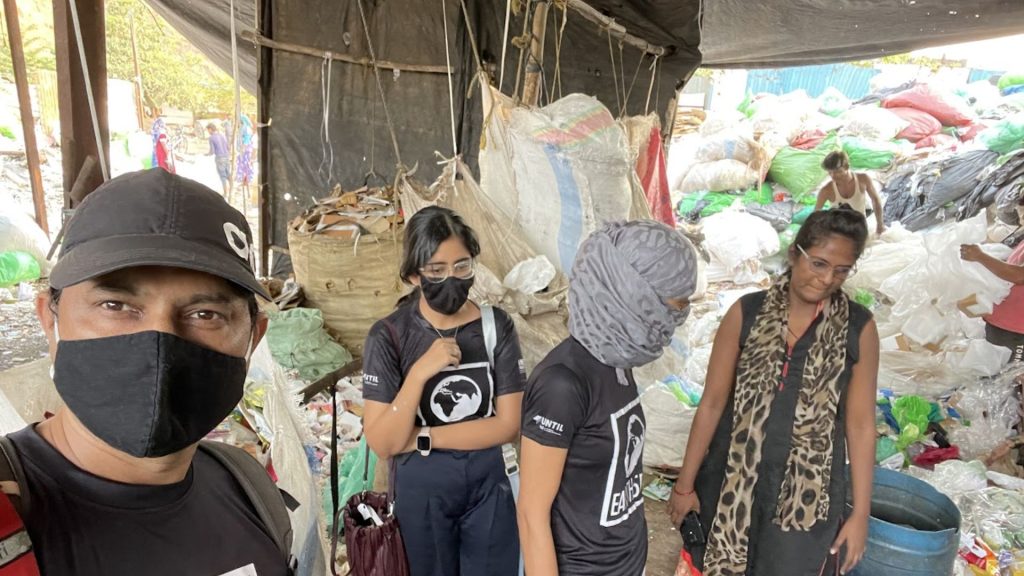
Scientific and Quantitative Evidence of Impact
Earth5R’s community-driven waste management model has demonstrated measurable, scientifically validated impacts across environmental, public health, and economic dimensions. One of the most striking outcomes is the reduction in overall waste volume through source segregation and localized composting.
In multiple intervention sites, including Siddharth Nagar, data collected through Earth5R’s citizen science platform shows a 35–45% drop in uncollected waste within the first six months. Waste composition also shifts significantly, with a reduction in mixed waste and a clear rise in properly sorted organic and recyclable materials. This segregation improves recycling efficiency and reduces the burden on landfills.
Public health improvements have been observed through both qualitative assessments and quantitative indicators. In areas where Earth5R has implemented its model, incidences of vector-borne diseases such as dengue and malaria have decreased by up to 30%, according to local public health records and community surveys.
Similarly, fewer cases of respiratory illnesses have been reported due to the reduction in open waste burning—a common practice in slums before intervention. Clean-up drives and waste removal from waterlogged areas have further decreased the risk of waterborne diseases, especially during monsoons. The model’s environmental benefits are also quantifiable.
Lower greenhouse gas (GHG) emissions have been recorded due to minimized transport of waste and on-site composting of organic material, which prevents methane emissions from landfills. Earth5R’s internal lifecycle analysis estimates that decentralized composting and recycling efforts reduce CO₂-equivalent emissions by over 0.5 metric tons per household annually.
Moreover, local clean-up campaigns contribute to improved water quality in nearby streams and drainage systems, as measured through reductions in solid waste density and biochemical oxygen demand (BOD) levels. Economically, Earth5R’s model fosters inclusion of the informal sector, often the backbone of waste recovery in slums.
By formalizing and training local waste pickers, Earth5R integrates them into a more structured and safer economy. Green jobs are created through composting units, waste segregation centers, and upcycling workshops. In Siddharth Nagar alone, eco-leaders and trained residents generated up to ₹3,000–₹5,000 per month through compost sales and recycled goods.
These outcomes are supported by pilot project evaluations and third-party research collaborations with academic institutions and NGOs. Reports from Earth5R’s partnerships with IIT Bombay and TISS have validated the model’s success in changing community behavior, improving waste metrics, and generating socio-economic benefits—offering strong evidence for its broader scalability.
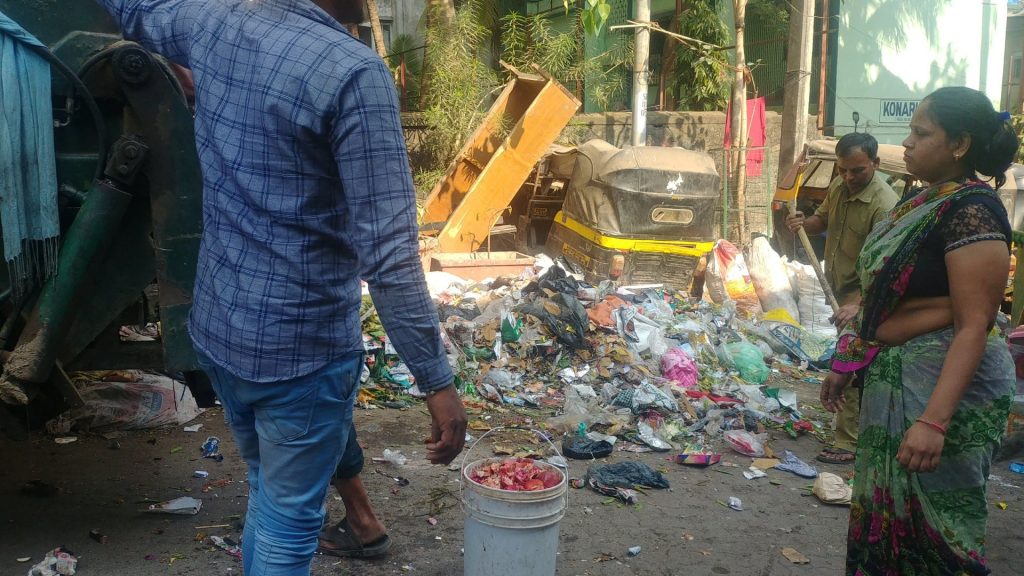
Scalability and Policy Implications
Earth5R’s waste management model is designed with scalability at its core, driven by a modular framework, cost-effectiveness, and deep-rooted community engagement. Unlike large-scale municipal systems that require heavy infrastructure investment, Earth5R’s approach leverages low-cost, decentralized modules adaptable to the diverse socio-economic and spatial realities of slums.
Each module—comprising waste audits, volunteer training, community workshops, segregation units, and composting hubs—can function independently or be scaled up in clusters. This plug-and-play model allows rapid deployment across various urban contexts, regardless of population size or settlement layout.
Community ownership is another cornerstone of scalability. By training local residents as eco-leaders and involving informal waste workers as integral contributors, Earth5R fosters a sense of responsibility and pride within the community. This grassroots participation not only ensures long-term sustainability but also reduces dependency on external enforcement or monitoring mechanisms.
Additionally, the model’s cost-effectiveness—achieved through the use of locally sourced materials, volunteer networks, and minimal capital expenditure—makes it accessible for underfunded municipalities and NGOs. Earth5R’s model is strongly aligned with India’s national waste management and urban renewal frameworks.
It supports the objectives of the Swachh Bharat Abhiyan, Smart Cities Mission, and the Solid Waste Management Rules 2016, especially by promoting source segregation, decentralized treatment, and inclusion of the informal sector. Furthermore, the model contributes to India’s commitments under international frameworks such as the Paris Agreement and the United Nations Sustainable Development Goals (SDGs).
It does so by addressing urban resilience, climate action, and inclusive development through localized, community-driven waste management practices. Beyond India, Earth5R’s principles are highly applicable to other urban informal settlements in the Global South. Cities in Africa, Southeast Asia, and Latin America face similar challenges: rapid urbanization, weak municipal services, and high reliance on informal labor.
Earth5R’s modular and inclusive framework can be localized to fit cultural contexts and policy environments in cities like Nairobi, Manila, or Rio de Janeiro, where slum populations are substantial and waste systems are overstretched. Early conversations and pilot partnerships in Kenya and Indonesia highlight the model’s adaptability and cross-border relevance.
For policymakers and urban planners, Earth5R’s model offers valuable insights into building resilient, inclusive waste systems. One of the key recommendations is to integrate community-based models into urban planning documents and ward-level action plans, ensuring that localized solutions become part of official development strategies.
Funding decentralized infrastructure through public-private partnerships and municipal grants can enable cost-effective scaling while leveraging diverse sources of support. It is also essential to incorporate informal workers into formal solid waste value chains through training, certification, and the provision of social protection, recognizing their role as vital stakeholders in urban sanitation.
Encouraging behavioral change through awareness campaigns and performance-based incentives can further deepen community engagement. Finally, investing in technologies that facilitate citizen science, data collection, and real-time monitoring will help create data-driven, adaptive systems that evolve with the community’s needs.
Earth5R has also demonstrated the importance of multi-stakeholder collaborations. Its partnerships with municipal corporations facilitate policy alignment and access to infrastructure. Engagements with NGOs and academic institutions support training, research, and impact evaluation.
Meanwhile, corporates engage through CSR initiatives, offering financial backing and employee volunteering programs. These collaborations enhance both the reach and resilience of Earth5R’s interventions, creating a replicable and robust model for managing waste in some of the world’s most challenging urban environments.
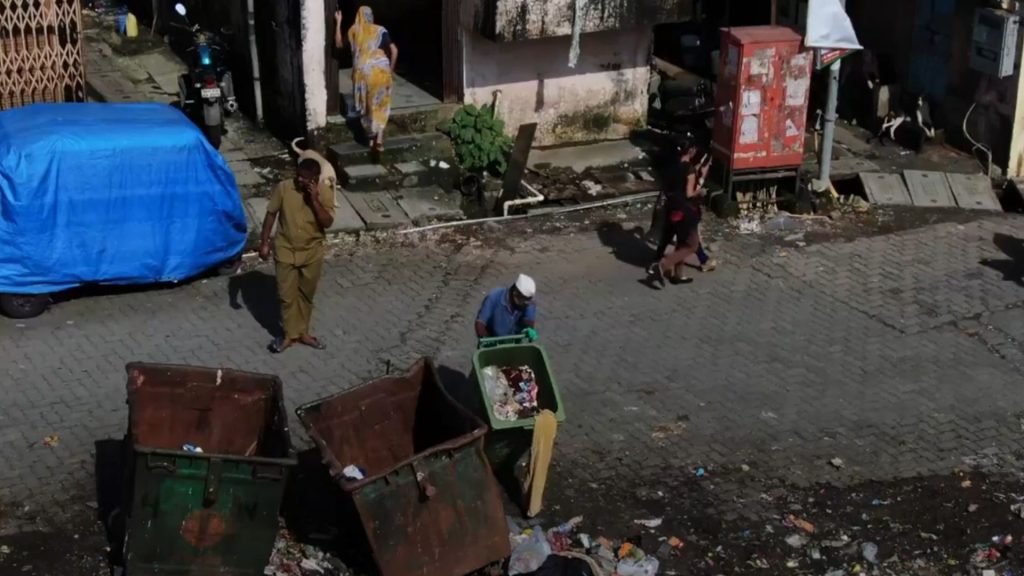
Empowering Communities, Transforming Waste: The Future of Sustainable Slum Waste Management with Earth5R
Urban slums present a uniquely challenging context for waste management due to high population density, lack of infrastructure, and limited integration with municipal services. Traditional top-down systems have consistently failed to meet the needs of these communities, often leading to severe environmental degradation and public health crises.
Earth5R’s model offers a transformative alternative—one that is rooted in community participation, scientific rigor, and circular economy principles. By focusing on decentralization, behavioral change, and low-cost scalable solutions, Earth5R addresses the fundamental barriers that hinder effective waste management in informal settlements.
The strength of Earth5R’s model lies in its adaptability. It can be implemented in diverse slum environments with minimal infrastructure. The model is also highly inclusive, engaging residents at every level of implementation. It significantly reduces the volume of uncollected and mismanaged waste in slum areas. At the same time, it empowers local communities through education and awareness.
Economic opportunities are created by training residents and supporting micro-enterprises. The inclusion of informal waste workers and the promotion of sustainable consumption align the model with national missions like Swachh Bharat Abhiyan. It also supports global frameworks such as the Paris Agreement and the Sustainable Development Goals.
Looking ahead, the potential for replicating Earth5R’s model in other urban poor contexts—across India and in other parts of the Global South—is considerable. To support this expansion, increased collaboration with policymakers, urban local bodies, NGOs, and the private sector will be essential.
Future innovations may include AI-enhanced waste tracking, digital incentive platforms, and greater integration of real-time data into planning and governance. Continued research and longitudinal studies will also be important to evaluate long-term impacts on community resilience and environmental health. Ultimately, Earth5R’s model represents a paradigm shift—treating waste not as a liability, but as a resource for community development, environmental sustainability, and systemic change.
FAQs on A Scalable Waste Management Solution for Slums by Earth5R
What is Earth5R’s waste management model?
Earth5R’s model is a community-driven, decentralized system that focuses on reducing, segregating, and sustainably processing waste in urban slums using the 5R principles—Refuse, Reduce, Reuse, Repurpose, and Recycle.
Why is waste management a major issue in slums?
Slums often lack formal waste collection services, infrastructure, and awareness, leading to uncollected waste, health hazards, and environmental pollution.
How is Earth5R’s approach different from conventional municipal systems?
Unlike top-down models, Earth5R empowers communities, uses local resources, and creates circular waste economies through localized solutions.
What types of waste are typically generated in slums?
Slum households produce biodegradable waste (food scraps), plastic packaging, multilayered films, textiles, and hazardous items like batteries and medical waste.
How does Earth5R ensure waste segregation at the source?
Earth5R trains residents through workshops and mobilizes eco-leaders to promote household-level segregation using color-coded bins and daily tracking.
What is a waste audit and how is it conducted in slums?
A waste audit involves analyzing waste types and volumes in a community. Earth5R conducts these using citizen science methods and mobile tools.
What results has Earth5R achieved in communities like Siddharth Nagar?
Within six months, waste segregation reached 80%, uncollected waste reduced by 40%, and several residents started green businesses like composting and upcycling.
How does Earth5R improve public health through its model?
By reducing open dumping and burning, the model lowers disease outbreaks such as malaria, dengue, and respiratory infections.
How does the model reduce greenhouse gas (GHG) emissions?
Decentralized composting and reduced transport of waste significantly cut methane and CO₂-equivalent emissions.
Is the model cost-effective for low-income settings?
Yes, it uses minimal infrastructure, local labor, and community volunteers, making it affordable and sustainable for slum settlements.
What role do local residents play in Earth5R’s model?
Residents are trained as eco-leaders, segregate waste at home, run composting units, and educate their neighbors.
How are informal waste pickers included in the system?
Earth5R formalizes their role through training, safety gear, and income opportunities in recycling and sorting centers.
How does Earth5R ensure long-term behavior change?
Through continuous education, incentives, public recognition, and peer influence, Earth5R nurtures lasting environmental habits.
What training is provided to volunteers and eco-leaders?
Training includes waste segregation techniques, composting, health safety, community engagement, and data collection.
Can school children or youth be involved in the model?
Yes, Earth5R actively involves students and youth in awareness drives, clean-up events, and environmental education programs.
How does Earth5R’s model align with Swachh Bharat and SDGs?
It contributes to Swachh Bharat Abhiyan and supports SDG 11 (Sustainable Cities), SDG 12 (Responsible Consumption), and SDG 13 (Climate Action).
Can this model be scaled to other cities or countries?
Yes, its modular, low-cost structure makes it adaptable to slums in Africa, Southeast Asia, and Latin America.
What policy changes can help replicate this model nationally?
Policies should support community-based planning, fund decentralized systems, and formally recognize informal workers.
How can municipalities collaborate with Earth5R?
Municipal bodies can offer logistical support, integrate Earth5R into local plans, and co-fund implementation with CSR and NGOs.
What future innovations is Earth5R exploring?
Earth5R is piloting AI-based waste mapping, mobile apps for citizen reporting, and digital incentive platforms to enhance efficiency and engagement.
From Waste to Wealth: A Collective Call to Transform Urban Slums
The waste crisis in urban slums is not just an environmental issue—it’s a public health emergency, an urban governance challenge, and a missed opportunity for inclusive development. Earth5R’s model has proven that community-led, science-driven waste management can transform even the most underserved areas into cleaner, healthier, and more resilient neighborhoods. But to scale this impact, collective action is essential.
We call upon municipal authorities to recognize and integrate decentralized, community-based models like Earth5R into urban sanitation policies. Corporate stakeholders can contribute through CSR investments that fund green infrastructure and capacity building. NGOs and civil society groups are vital partners in mobilizing grassroots support and extending outreach.
Researchers and academic institutions can help evaluate impact, improve tools, and drive innovation. Most importantly, citizens—from students and volunteers to informal workers and residents—must take ownership of their communities and become agents of change.
The future of our cities depends on what we do today. Waste should no longer be seen as a burden, but as a powerful resource to build sustainable livelihoods and inclusive cities. Join Earth5R in reshaping the narrative—from pollution to participation, from waste to wealth. The time to act is now.
~Authored by Ameya Satam

